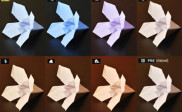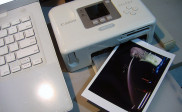How to Achieve Great Self Portraits
Why would anyone need to make self portraits? Well you don’t have always a model at your hands, and even if you have, you won’t find someone willing to stay long hours in front of your lens while you take your time experimenting and learning.
So, who is better than yourself to be the model of your own photos? You know exactly what you want as a final result, you are always available to photograph yourself, and you are willing to keep doing the same expression over and over again until you get a satisfying result. After this introduction, self portrait photography may seem to be a tiring and boring process, but when you practice it long enough and when you learn to control the technicalities of it, then you will discover the magic of self portraiture. You will enjoy moments of self discovery and introspection. It can even be a sort of meditation or therapy where you will spend hours only with yourself.

Yassine Hakimi
Self portrait photography is also a great way to learn and master new techniques. Experiment on yourself and you will find yourself more comfortable when using these techniques with someone else and you will get impressive results quite easily.
What you will need:
When delving into self portrait photography you will need some additional accessories along with your camera and lenses. These accessories will help you perform the roles of the photographer and the model simultaneously and with ease.
-A tripod: A tripod will allow you to keep the same framing for a series of photos without having to hand hold the camera. It will also offer you stability for your shots. Its portability and versatility will help you in getting good self portraits in any setting you want and from a big variety of points of view. If you don’t have access to a tripod you can use something else to put your camera on, like a wall, a desk, a table. But, these last options will deprive you of a certain amount of freedom in your compositions.
-A remote control: A remote control will enable you to take the shots without having to move after perfecting your composition. You can use either a cable release or an infrared remote control. Make sure that the remote control you are buying is compatible with your camera model before purchasing it.
The alternative solution to the use of a remote control is to use the camera’s self timer. But with this solution you will have to rush and take your place in front of the lens before the shot is taken, which can be exhausting after a few shots.
Dealing with the problem of focusing:
One of the biggest challenges of self portrait photography is the issue of focusing. How to focus accurately when you are from the other side of the lens?
You can rely on the camera’s auto focus feature but it will be very hard to get it right, especially if you are in front of a neutral background. Also, there is the risk of the camera focusing on something else in the frame.
To overcome this problem you need to use manual focus. You need to place something in the spot you are going to be in, and to focus on it and then to just remove it when you take your place in front of the camera. Also consider using relatively small apertures to get a large depth of field (only in case you are not concerned with isolating yourself from the background).
You are set; now, shoot:
Once you have dealt with the problems of setting your camera, triggering it remotely and focusing, you can concentrate on the artistic side of self portraiture and begin the creative process. Self portraits are exactly the same as regular portraits. The only difference is that you are the photographer and the model at the same time, and you should make this an advantage not an obstacle. So, think of what kind of portrait you want to capture first. Will it be a close-up or an environmental shot? Are you trying to emphasize facial expressions or body language? Once you decided on what type of self portrait you are going to take you need to work on your lighting, composition and atmosphere.
Make your lighting as good as you can and you will get impressive photos. It’s as simple as that. Light plays, along with composition, the biggest part in determining whether a shot is great or just dull and normal. If you are using natural light avoid the harsh midday sunlight and try taking your self portrait late in the afternoon when the sun is at a low level which will provide you with soft shadows and beautiful skin tones. In case you are more of an indoors person and you are using artificial light, you should consider using either flash units or continuous lighting that is strong enough to allow the use of quite fast shutter speeds. Try placing the light at different angles in order to get various possible atmospheres and moods.Then choose the one you like the most. Also, don’t forget to set your white balance accurately when using artificial lighting.
Next to the light in matter of importance is composition and you must give it the concentration and devotion it requires. When composing your shot try to include only what’s relevant to the shot and to exclude any element that may distract the viewer’s eyes from the subject (you). Also, don’t forget the rule of thirds, as it can help you when you don’t know where to begin. But, don’t just stick to the rules, sometimes breaking them produces much better results.
Here are some tips which can help you achieve better self portraits:
-Use an unusual point of view: Take your self portrait from an angle that is not simple and straightforward. Find a point of view which will grab the viewer’s attention immediately and keep it on your shot.
– Use props: include the things around you to add interest and personality to your self portraits. A hat, a book, or a clown nose can add a lot of meaning to your photo.
– Concentrate on a detail: You don’t have to include your face in the frame to take a self portrait. You can concentrate on only one detail which you think characterizes you or a body part which you are proud of. So, get close to your camera and take a photo of only your eyes, back, hair, or even feet and you might get a self portrait which defines you better than a full body shot.
– Shoot yourself doing what you love: That’s why most photographers shoot themselves with a camera in front of a mirror. Try to capture your self during an activity you enjoy doing will help you tell a story through your self portrait. It can be knitting, reading, playing football, or just chilling and watching television; if you enjoy something shoot yourself doing it.
Some inspiring examples of self portrait photography:

Photo by Stephen Poff




